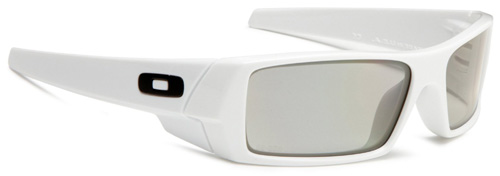With the advent of 3D TV, a new category of accessories has arisen: aftermarket 3D glasses. For active 3D TVs, because of the complexity of the design, and incompatible communication protocols used by the different manufacturers, there are few players in the universal 3D eyewear market. But for passive 3D TVs, such as the latest models from LG, Toshiba and VIZIO, any company already making glasses or sunglasses can very easily offer 3D-compatible glasses simply by applying a technique called "circular polarization" to their lenses.
With circular polarization, which is also used in most 3D movie theaters, the left eye image is displayed with the light polarized in one direction, and the right eye image is polarized in the other direction. Passive 3D glasses decode these images separately for each eye so that your brain will get the illusion of 3D from a flat screen. Passive 3D TVs generally come with a few pairs of glasses in the box, and additional pairs are generally much cheaper than active 3D glasses. So why would you want to pay $120 for an aftermarket pair of passive 3D glasses such as Oakley's 3X Gascan HDO-3D glasses? Two reasons: design and optics quality.

Stylin' at Home or in the Theater
Since circular polarization is used in most 3D theaters, you can bring the Oakleys along to your viewing of the latest 3D blockbuster, but the more likely use of these glasses will be for use at home by owners of one of the new passive 3D TVs. Please note that these are not designed to be used as sunglasses, but rather for indoor 3D viewing only.
We tested the Oakley 3X Gascan 3D Glasses primarily with VIZIO's 65-inch XVT3D65SV Theater 3D TV. Compared to the included glasses, as well as one pair of RealD glasses borrowed from a 3D theater, the HDO 3D glasses were certainly more stylish, with sleek lines and sporting the Oakley logo on the temples. Also, the curvature of the lenses provided a slightly more immersive view of the screen -- the 3D effect was subtly enhanced by this lens design.


It's the Optics that Matter
Just as with cameras, the optics (the lenses) make the biggest difference in overall image quality of passive 3D glasses. And in that respect, the Oakleys did not disappoint. Oakley claims 540 patents in optics, and use a variation of their HDO® (High Definition Optics) technology called HDO-3DTM. This technology allows Oakley to produce a curved lens optimized for 3D viewing.

Turn-Ons
Turn-Offs
Final Thoughts
If a passive 3D TV has recently made its way into your home or that of a friend or relative, Oakley's HDO 3D passive 3D glasses will help you to make the most of your 3D viewing experience. They are expensive but do provide a noticeable, if sometimes subtle improvement over less expensive options. Also, how cool will you look when you stroll into the local 3D theater sporting a pair of Oakleys? Form meets function, indeed.
Item Details:
ph: (800)431-1439
On the web: www.oakley.com
Where to Buy:
| Overall | |
|---|---|
| Value | |
| Performance | |
| Features/Ergonomics |